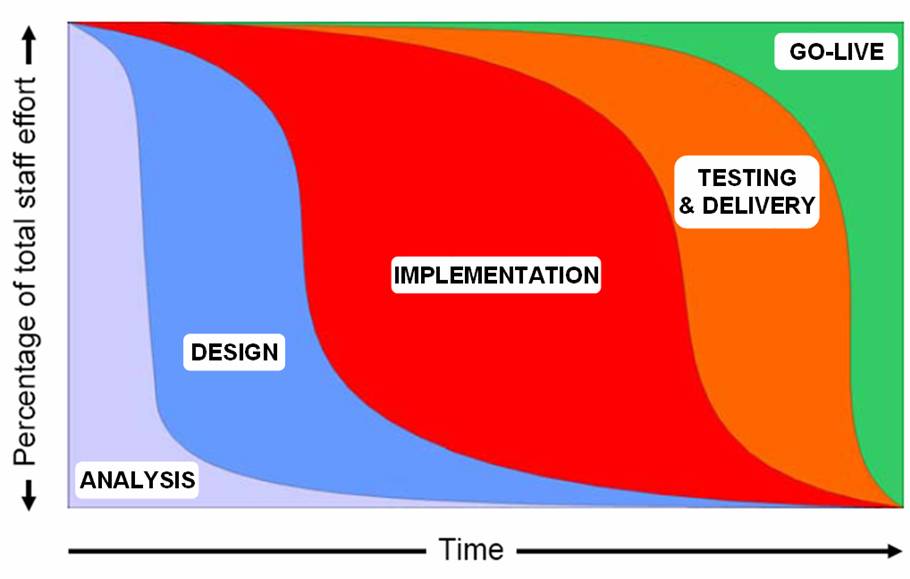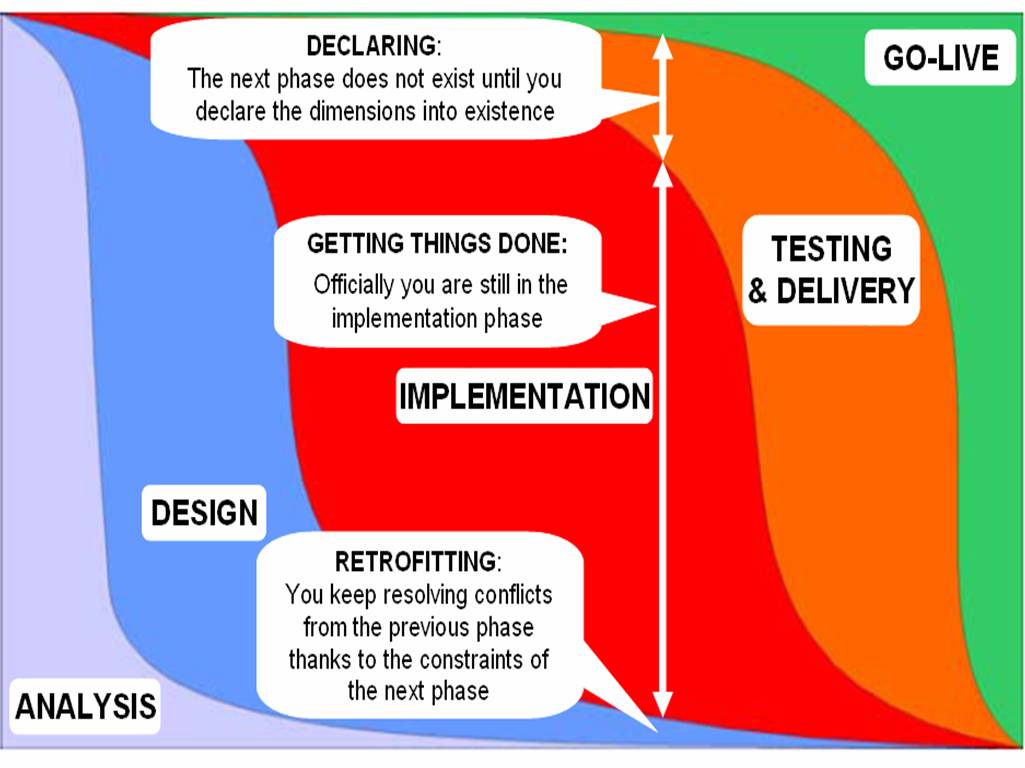If things seem under control, you’re just not going fast enough. – Mario Andretti
 Vilfredo Pareto is the father of the Pareto Principle, also known as the 80/20 rule. Pareto noticed that 80% of Italy’s wealth was owned by 20% of the population. He then carried out surveys on a variety of other countries and found to his surprise that a similar distribution applied.
Vilfredo Pareto is the father of the Pareto Principle, also known as the 80/20 rule. Pareto noticed that 80% of Italy’s wealth was owned by 20% of the population. He then carried out surveys on a variety of other countries and found to his surprise that a similar distribution applied.
As a matter of fact, the same distribution applies to project management. I tend to look at projects as a lifecycle of different phases. I theory they are sequential. However, in real life none of the phases are completely over until the full project is finished. But each phase is dominant at a particular time.
As you can see in the drawing below, even when the project is officially in the design phase, some activities belonging to the previous and next phases, such as project setup and deployment, will be going on as well. Generally speaking, 80% of the work you are performing belongs to the official project phase you are in, and the remaining 20% of the activities belong either to the previous or the next phase.

[CLICK ON THE DRAWING TO ENLARGE]
In real life, projects are a sequence of non-discrete project phases. Certified nincompoops wearing a ‘PMP’ or a ‘PRINCE’ tag will have a hard time understanding the paradox that one can only close a project phase for the full 100% by moving to the next phase. Typically, the threshold is at an 80% completion rate. The best way to complete the remaining 20% is not by sticking to that phase, for you will be wasting 80% of the resources and the same share of momentum.

[CLICK ON THE DRAWING TO ENLARGE]
The point is that moving on simply keeps you with both feet on the ground because you will immediately face the constraints of the next project phase. And it is exactly these down-to-earth and real-life constraints that will allow you to complete the remaining 20% of the previous phase. Those who fail to understand this principle will be stuck in theoretical discussions and should be prepared to lose momentum.
Therefore, each time you are reaching 80% completion of a certain project phase, you should ask yourself 3 questions:
1. How much value am I adding by completing the current phase and not yet starting up the next phase?
2. How much value am I wasting by doing so?
3. How will I redistribute my resources: time, money, manpower and attention by switching phases?
Related article:
Good Wine Needs No Bush – February 18th, 2008

